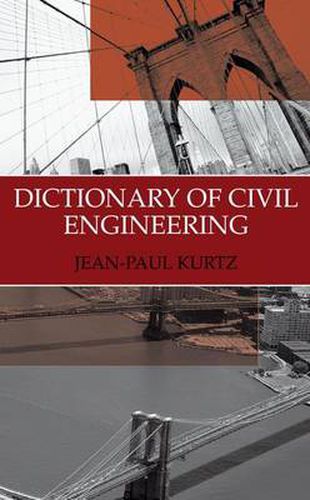Readings Newsletter
Become a Readings Member to make your shopping experience even easier.
Sign in or sign up for free!
You’re not far away from qualifying for FREE standard shipping within Australia
You’ve qualified for FREE standard shipping within Australia
The cart is loading…






I am pleased to present a work which marks a milestone in the history of public works and, more precisely, in that of permanent structures-a comprehensive dictionary of Civil Engineering terms. Since the beginning of time, Man has always tried to find a means to clear the obstacles which nature erected to displace him. With the first tree trunk thrown across a river, man sought to improve the crossing structure. After the invention of the wheel, and to satisfy his thirst for conquest (Roman ways), and comfort (aqueducts), man built bridges that became a preremptory necessity to move quickly. Thus, Man started to build wooden and masonry works. With the passing centuries, the builders became masters in the art of building masonry works. Then came the Industrial Revolution and the advent of the steel (1864), which was closely followed by the invention of the reinforced concrete (1855). The need for railways and improving the road network inspired great works of crossing such as viaducts and tunnels. The boom of the railway network and the development of the car required the construction of an increasing number of new structures. This phenomenon continues today with hundreds of structures built each year throughout the world.
$9.00 standard shipping within Australia
FREE standard shipping within Australia for orders over $100.00
Express & International shipping calculated at checkout
I am pleased to present a work which marks a milestone in the history of public works and, more precisely, in that of permanent structures-a comprehensive dictionary of Civil Engineering terms. Since the beginning of time, Man has always tried to find a means to clear the obstacles which nature erected to displace him. With the first tree trunk thrown across a river, man sought to improve the crossing structure. After the invention of the wheel, and to satisfy his thirst for conquest (Roman ways), and comfort (aqueducts), man built bridges that became a preremptory necessity to move quickly. Thus, Man started to build wooden and masonry works. With the passing centuries, the builders became masters in the art of building masonry works. Then came the Industrial Revolution and the advent of the steel (1864), which was closely followed by the invention of the reinforced concrete (1855). The need for railways and improving the road network inspired great works of crossing such as viaducts and tunnels. The boom of the railway network and the development of the car required the construction of an increasing number of new structures. This phenomenon continues today with hundreds of structures built each year throughout the world.